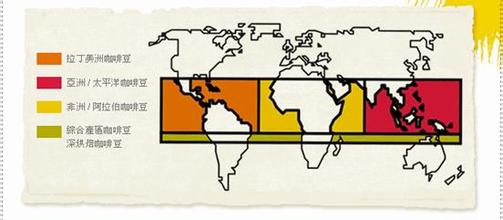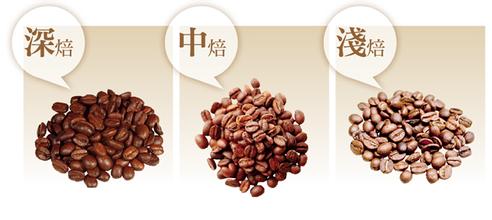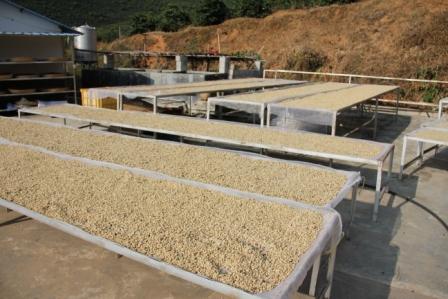SCAA report on Coffee Preservation SCAA of the American Special Coffee Association develops and promotes specialty coffee
A report on the preservation of coffee SCAAMember-DrivenResearch
CoffeeStalingReport
ByEmmaBladyka,SCAACoffeeScienceManager
Brief introduction
In food science, coffee is called a stable product. This is because, compared with many other foods, it does not deteriorate due to enzymatic or microbial process destruction (Nicoli et al. 1993; Italian and 2005 viani; Anese et al. 2006). However, the specialty coffee industry recognizes that important chemical and physical changes have taken place after roasting and that some of these changes play a role in preservation (Nicoli et al. 2009). The freshness rate (aging) of coffee can be defined as the perceived amount of flavor change with a specific amount of time. This rate can be used to determine the lifespan of a cooked bean. The shelf life must be based on the individual or company to determine the best set point. Because the shelf life of coffee must be measured by the sensory cup method to measure the loss of quality and flavor. However, due to the unique taste and flavor of coffee beans, transient fluctuations and diversity of roasted coffee, the sensory cup test makes this process very challenging.
Define the scientific principles behind this aging (decline) problem. The physical and chemical changes of coffee after roasting are almost impossible to replicate and data analysis. Aging (decay) occurs in two ways at the same time over time: the passage of fresh flavor and the formation of "off" flavor. There is ample evidence that oxidation is the main enemy of cooked beans, followed by temperature and humidity (Capusio et al. 2001; Cardelli and Labuza2001;Anese et al., 2006). Secondary aging factors include external environment, including baking, coffee density, surface area / grinding, light and water activity, etc. To learn more about the scientific principle of coffee aging (decay) and the shelf life of ripe beans, please refer to the SCAA literature review recorded by SCAA.
The development and promotion of specialty coffee is the mission of the American Special Coffee Association (SCAA). Special coffee should always taste better. Keeping the coffee fresh is the key to maintaining the taste, especially when it is delivered to the customer's home. This fact leads to the need for SCAA to identify sensory experiences with customers in the coffee industry. This work is a joint direction of interest expressed by members of SCAA and the Bakery Association. In short, this group focuses on answering some basic, flavor-based questions. There are many assumptions in the industry that the flavor of coffee changes over time after roasting. Group An is a project leader based on the Baking Association to test "some of the hypotheses and go further" to understand how other factors in production affect the taste of coffee.
The research questions are:
1) We can judge the aging (decline) rate by the cup test, if any, what affects the fresh-keeping rate (aging)?
2) different packaging types affect fresh-keeping?
3) making different coffee (different producing areas, different varieties, and different processing methods) will have different rates of aging (decay)?
4) is there any effect of bean cultivation (open exposure to air) on the rate of aging (decay), which needs to be measured by taste?
Based on what is known about the aging rate of coffee (see SCAA Chronicle Literature Review on the subject of coffee) and the above research questions, four simple but important hypotheses are formed:
one. The longer the cooked beans are, the more flavor goes by, and the less flavor the tasters like.
two. The fresh-keeping rate of special coffee affected by the type of packaging. Packaging isolates oxygen, moisture and heat will delay aging.
three. Different coffee (including different varieties, producing areas and processing methods and other factors), the aging (decline) rate will be different over time.
four. Cooked beans will have a lower cup test score before they are packaged (exposed to air), and the subsequent aging rate will be faster than that of immediately packaged beans, losing many volatile substances and flavor compounds after long exposure to the air.

Important Notice :
前街咖啡 FrontStreet Coffee has moved to new addredd:
FrontStreet Coffee Address: 315,Donghua East Road,GuangZhou
Tel:020 38364473
- Prev

Columbia beans, one is Huilan, Colombia, and the other is supr from Medellin, Colombia.
Colombia is the world's largest exporter of washed coffee, and the name Colombia is all too familiar to many coffee drinkers. Most Colombian coffee you can see on the market is named after supremo or excelso, but this is actually the Colombian way of grading, that is, by head (supremo is greater than excelso). But those who know about coffee
- Next

Bubbling and freshness of hand-brewed coffee the richness of bubbles is positively correlated with freshness.
Bubble fullness is the expression of freshness and the king of delicious coffee. More and more people are getting used to buying freshly roasted coffee beans directly from bakeries, so there are a lot of tips on how fresh coffee beans are, the most common of which is whether there are enough bubbles when brewing. Freshly roasted coffee beans because the beans contain a lot of gas
Related
- Detailed explanation of Jadeite planting Land in Panamanian Jadeite Manor introduction to the grading system of Jadeite competitive bidding, Red bid, Green bid and Rose Summer
- Story of Coffee planting in Brenka region of Costa Rica Stonehenge Manor anaerobic heavy honey treatment of flavor mouth
- What's on the barrel of Blue Mountain Coffee beans?
- Can American coffee also pull flowers? How to use hot American style to pull out a good-looking pattern?
- Can you make a cold extract with coffee beans? What is the right proportion for cold-extracted coffee formula?
- Indonesian PWN Gold Mandrine Coffee Origin Features Flavor How to Chong? Mandolin coffee is American.
- A brief introduction to the flavor characteristics of Brazilian yellow bourbon coffee beans
- What is the effect of different water quality on the flavor of cold-extracted coffee? What kind of water is best for brewing coffee?
- Why do you think of Rose Summer whenever you mention Panamanian coffee?
- Introduction to the characteristics of authentic blue mountain coffee bean producing areas? What is the CIB Coffee Authority in Jamaica?

